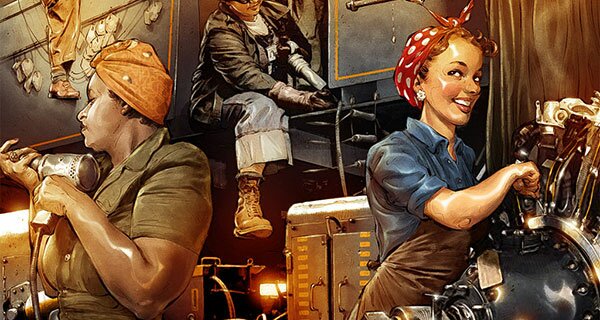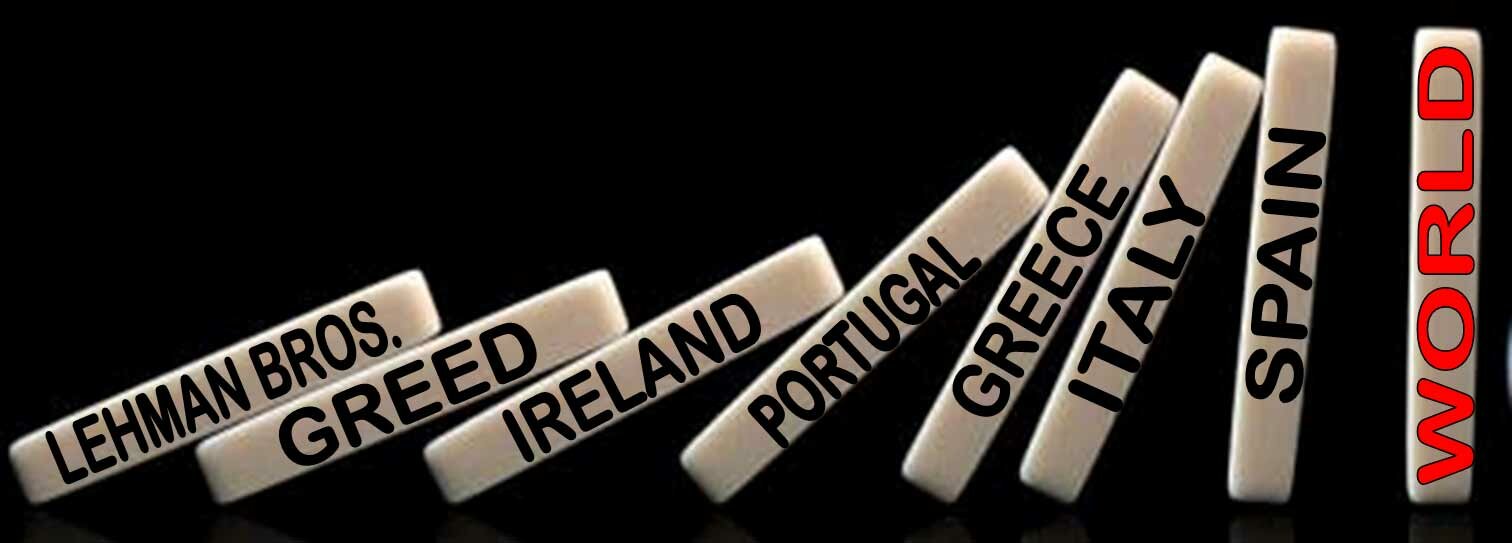The High Tech Sweatshop by Keith Sawyer
During my last year in high school my classmates and I were asked to do a class project on what our plans were after graduating. I did my presentation and suggested that I was going to take either information systems or civil engineering at the local college. When I was done my presentation, my teacher was impressed and made a comment about my choice selection. He suggested that people who work in the information technology field often go on to run or head the companies they work for. Up until that point I was sitting on the fence as to whether I would take information systems or civil engineering. The comment pushed me over the edge and into the world of information systems.
For the next three years I took a selection of computer and business courses to complete my diploma in information systems. During this time the “dot com” boom was mushrooming out of control and we were hearing stories of how easy it was to get a job if you had any computer skills. Our teachers would tell us stories of positions available at Nortel Networks and other tech companies. Friends would repeat stories about car companies looking to hire anyone with computer skills starting at twenty-five dollars an hour. My aunt, who lived in Ottawa (Canada’s Silicone Valley) would send me job postings that she thought I would qualify for when I graduated. We all believed we were going to walk out of school and choose the tech job of our dreams.
It was May 2000, the world had survived Y2K and I was ready to graduate. At about the same time the tech bubble had stop growing, looked bloated and was already starting to release some gas. I started my search for a job and the picture painted by my peers, teachers and aunt wasn’t looking good. I spent a week down in Ottawa at my aunt’s in the hopes of landing one of the many promised available jobs. I went through want ads, online job banks and the government of Canada’s employment service and still came up with nothing.
After a fruitless week I went back home and continued my part-time job at McDonalds while searching for work. Around this time I started hearing stories from some of my friends who had graduated and started working for a call center. The first thing I thought was the same thing everyone else thinks when they hear the word “call center”. I’ll be calling people at home, interrupt whatever they are doing to persuade them to buy a product or service they don’t want and don’t need. My friends assured me it wasn’t that type of call center because people called us and we didn’t call anyone. Somehow this made things seems a little better, like this would be different than those “other” call centers. After two months of unsuccessfully searching for my dream job I eventually submitted my resume and was hired in July 2000.
I had received my letter from the call center letting me know when my start date was and that I would be working for a “campaign” called Clarion. When I talked to my friends they said I would most likely be working for a DSL company sorting out Internet connections, so I was surprised when I received the letter informing me that I was working for what looked like a cosmetic company. My first day of training had cleared this confusion up by letting us know that Clarion was actually a code name for the company we would really be working for and that I would be working for this DSL company. For some reason management thought it was necessary to conceal the identity of the company we were providing services for. This was not the last time we had to hide information. We were also told that we could not tell any customer where we were located. If we were asked we could tell them Canada, and if they pushed for more information we let them know we were in Ontario, but couldn’t reveal the city. I’m not sure why, but you would be surprised the number of times this question would come up. From the perspective of the employees we never really received an adequate answer as to why we had to keep our identities a secret. This was just the beginning of the information that management would conceal.
It was clear early on in my training that management and the employees were segregated. I met my manager once during my training for about 5 minutes when he stopped into the class to introduce himself. After this, the only time I saw my manager was when he was walking around the call center to get from one location to another. He rarely interacted with any of the front line employees and would communicate any messages through the supervisors that monitored the floor.
After my training we were put on the floor at the side of an employee who had lots of experience. We would listen to them take calls for half the day then we would switch and start answering our own calls. During this time we were introduced to the technological methods that management would use to control every aspect of our working days.
During training I was always curious how they could manage 1500 employees and make sure they were doing their jobs. I expected to enter the call center and hear phones constantly ringing and people talking over each other. I thought it would be utter chaos. When we finally hit the floor it was quiet. I put my headset on with my trainer and we logged into the phone. This is the first time I’d ever seen anyone log into a phone. My trainer explained to me that once you were logged on your shift started. Calls would automatically start arriving at your phone. Instead of a ring, you would hear a little beep in your ear to let you know you had received a call. Once you hang up another call would start. This would continue for the next 8 hours. Of course every new employee asks the same question, “what if I have to go to the washroom?” It was simple. You pressed a certain key sequence and your phone went on pause. The next logical question was “what’s to stop someone for pausing the telephone their entire shift?” This was the beauty of the entire system. Once you logged onto the phone your time was being tracked. Washroom breaks, placing a caller on hold, call times, the number of times you hung up on a caller and how long you were on each call. On top of this the calls were recorded.
With all of this information being recorded it was easy for a handful of supervisors to manage a floor of a couple thousand employees. Employees were reprimanded for taking too long of a washroom break or too many washroom breaks. Call times were expected to be ten minutes or less. The employees and the supervisors all knew this rule was ridicules, but it was enforced anyway. If you couldn’t solve the problem in less than ten minutes a supervisor would walk over to your station and tap you on the shoulder and request you end the call as quickly as possible. At the ten minute mark your main goal was not to solve the customer’s problem, but to get the customer off the phone as quickly as possible. If you hung up on a customer a report had to be filled out as to why that customer was disconnected. It was not acceptable to hang up on a customer that was swearing and screaming at you. It was your job to calm them down and try and sort out their problem, even if they only called to complain.
The calls that were recorded went to the QC (quality control) department for selection and screening. Each and every call was not screened, just a sampling. If a customer called to complain about an employee, they could pull that call and listen to see if the complaint was justified. It was also their job to listen to the call to make sure protocols were being followed. Each employee was given a list of scripts they were expected to memorize so that when a customer called they were getting the same information and experience from each employee. It was the call center’s way of “taylorizing” the environment similar to a production facility so that the service being offered was the same for each person calling in. Some of the scripts included were how to answer the phone, how to transfer to another department, how to place someone on hold and how to end a call. The point is the employees had little control over how they reacted or interacted with the customer. If we strayed from these scripts, we were coached on how to do them properly. Each QC report was graded and given to the employee. Too many low scores and employees would be reprimanded. Too many reprimands and employees were fired.
After a couple of months working for the DSL company, demand began to slow down and we didn’t need as many employees to handle the calls. The numbers that were used to track the number of calls each person handled was used to lay off employees whom couldn’t find work in other departments. I ended up transferring to another campaign that handled technical support calls for a company that sold computers and Internet access. This was a little more in my field and a better fit for me. I enjoyed the technical support calls because I could help people.
After a couple of months of work, the company selling the computers ran into a problem with a Christmas promotion they were running. They sold thousands of Christmas computers that were expected to arrive before Christmas, but now realized that the majority would not make it. Customer care was all of a sudden swamped with calls they couldn’t handle. In order to alleviate customer care, we were told some calls would be routed to technical support. From the end of November to Christmas all I handled were customer care calls. The majority of the irate callers were looking to find out when their PC would arrive, or if they could get their money back. We were told from management to tell the customer that we were working on shipping out the units and that we couldn’t refund their money. This caused an influx of customers who wanted to speak to supervisors. It got so bad we were instructed from management that supervisors would no longer be taking calls and to inform the customer that the supervisor was in a meeting.
The experience for me was one of the worst work experiences I had ever been in. I needed the money so I couldn’t quit. I couldn’t be rude to a customer that was rude to me or hang up if they said something that upset me because we were controlled through the QC process. I couldn’t hide in the washroom, or stretch out the calls because every minute of every day was being monitored through the computer system. To make matters worse the information flow between management and the employees had stopped all together.
This experience taught me that technology is not always a good thing. It highlights what Karl Marx suggests when he talks about the owners of capital and their control over labour. The owners or controller of the capital or technology in this case was management. They used the technology to their advantage to track our every movement, productivity and effectiveness. They also used the technology to deliver messages to employees without opportunity for feedback or criticism. We were effectively being controlled to deliver what was expected of us and nothing more. The push for speed, accuracy and cooperation was enforced using technology, sometimes at the expense of customer service and our own well being.
The control was very effective. The only way out was to find a better job. Most people working at the call center were always looking for something better or a way out. In the end I finally left after being transferred again to a campaign that took care of angry New Yorker’s and their cable bills. It was the only way I could get out from under the relentless pressure of working at a job I loathed doing. This was not what I went to school for, this was not my dream job and this definitely wasn’t what I was promised when I was told about the great future I had entering into the information technology field. I wasn’t running a company like my high school teacher suggested, I was running from one.
Cite This Article
Dr. S. (2012). The High-Tech Sweatshop. The Socjourn. [https://sociology.org/the-high-tech-sweatshop/]

Lila, the Revolutionary
By: William T. HathawayLila, the Revolutionary is a fable for adults about an eight-year-old girl—smart, charming, and tough as can be—who creates a world revolution for social justice. No one ever told her she couldn't end poverty and inequality, so she doesn't doubt that she can Just Do It! Starting with the Nike shoe factory where she works. Like the boy in "The Emperor's New Clothes," Lila can see the reality that adults are blind to. And she's not shy about pointing it out. Her story is a call to action: If Lila can do it, so can we. She convinces us that Yes, a better world is possible, and we're the ones to create it.
[ Kindle | Amazon.com | Book Finder ]
 The Socjourn A New Media Journal of Sociology and Society
The Socjourn A New Media Journal of Sociology and Society



great article
I wonder why no one has commented on this article. It is sociologically very sound. Robert
Very informative description of the working system and system of control used in those companies. Although, I expected more extended Sociology-related analysis of this experience in the end. On the other hand, the described condition gives an opportunity for everyone to analyze it on their own.
I still believe this paper is great. Although the an expanded sociological analysis would be acceptable, the paper stands on its own, as a personal reflection piece found in personal biographies. So the method the student chose is sound.